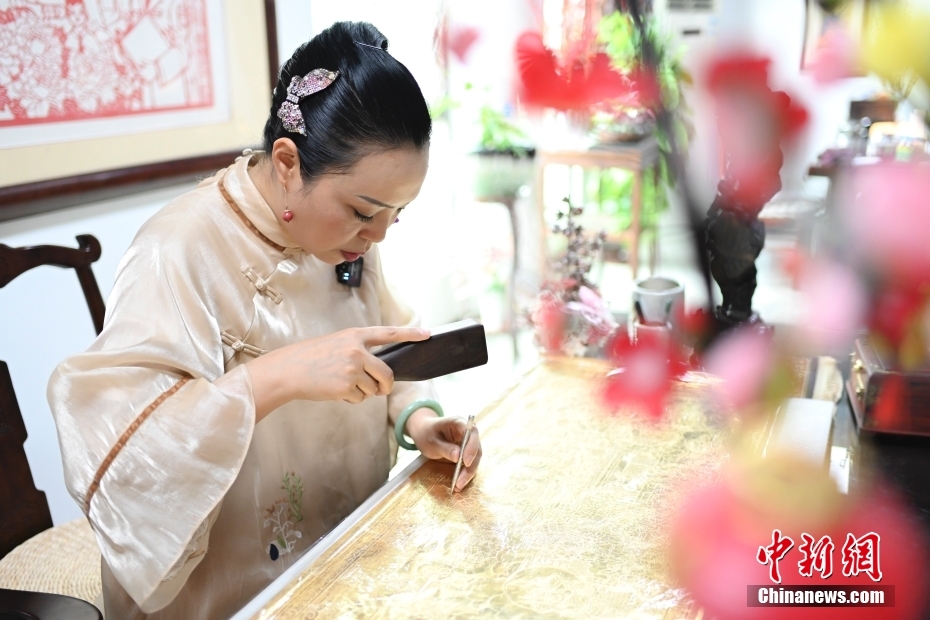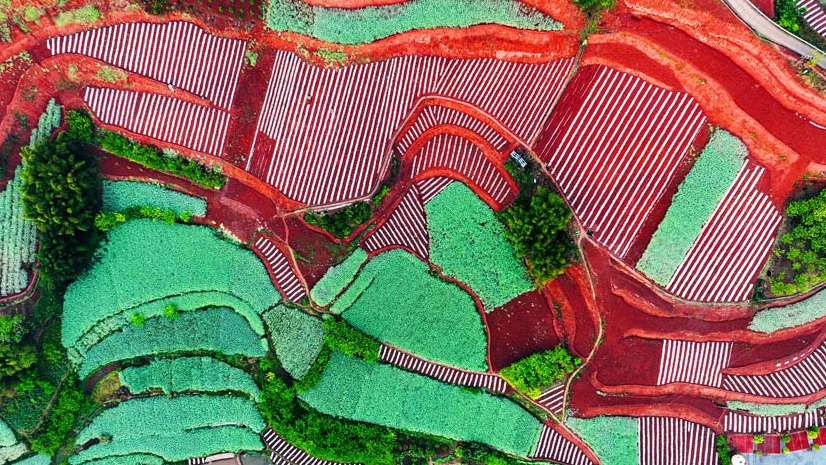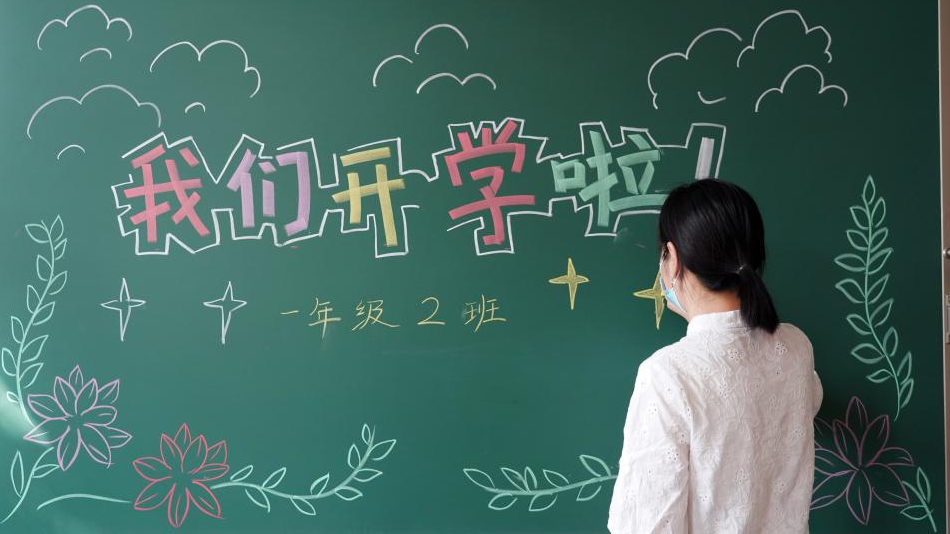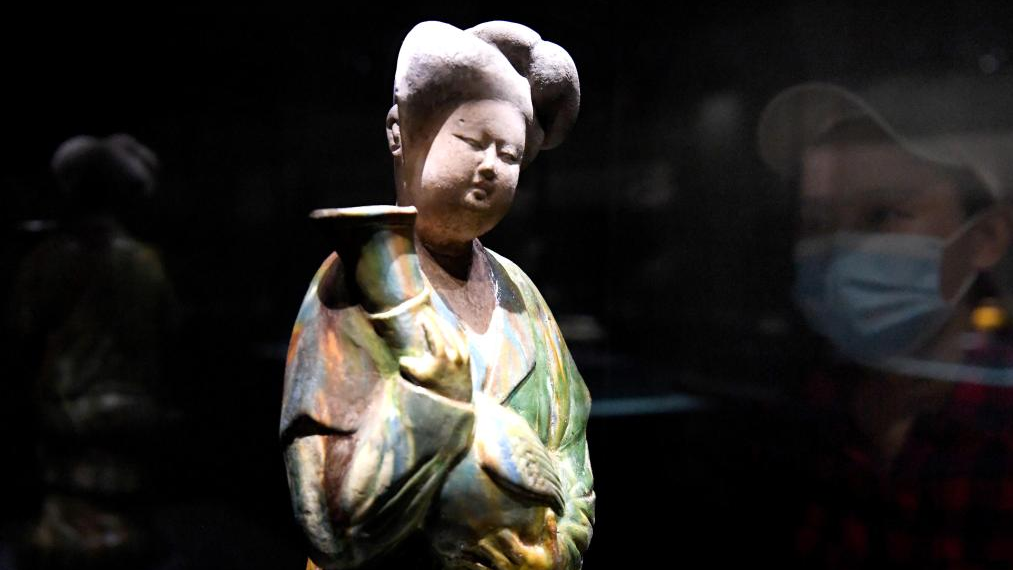Chinese folk artist creates glittering paper-cutting artwork using copper foil
Using a wooden mallet and a steel chisel with a ball at its point, Rao Baolian, a folk artist in Foshan City, south China's Guangdong Province, has been busy creating glittering paper-cutting style artworks by making dots on a piece of thin copper foil first and then connecting the dots to create a dazzling picture, Chinanews.com reported.
Copper chiseling cut-outs is similar in form and style to paper-cutting artworks, with the special kind of paper-cutting art that Rao engages in being a unique traditional craft of Foshan with a history of more than 800 years.
As the most outstanding student of Chen Yongcai, a national-level representative inheritor of intangible cultural heritage, Guangdong paper cutting, Rao has searched all over the country for suitable materials for making copper chiseling cut-outs, and has improved the creative techniques used to make increasingly more vivid works of art. The traditional approach adopted by craftspeople when creating patterns on copper foil only involved engraving patterns on one side of the copper foil, but Rao invented a new method of tapping the back side of the copper foil after finishing the front side in order to create a relief sculpture-like effect, making copper chiseling cut-out works even more attractive.
Rao has also tried to use the pigments adopted in Tibetan Thangka paintings to color her works. Traditional copper chiseling cut-out works only have one color and the color comes off easily, Rao said, explaining that she decided to try using the pigments found in Thangka paintings because she heard the color in these paintings can avoid fading for a thousand years.
Most of the pigments adopted for use in Thangka paintings are made from natural stone powder and are rich in color, Rao added.
In an effort to carry forward and pass down the traditional craft, Rao recruits 12 students every three years. She will assemble the third batch of her students this September.
 |
Photos
Related Stories
- The art of cans: Innovations in traditional craft
- Young female saving traditional dyeing craft from dying
- 10-year-old Chinese girl inherits traditional craft of making glass grapes
- Art on fingertips: Cute mini ceramics
- Young inheritor passes down traditional filigree inlay craft after pursuing his dream job
- Public artworks form important cultural heritage for the Beijing Winter Olympic Games
- Explore glittering tradition of inlay craftworking techniques in north China’s Inner Mongolia
- World-renowned artworks shine at 4th CIIE
- Leather carving artist brings his designs to life vowing to protect, pass on traditional craft
- CraftAlive show held in Canberra, Australia
- In pics: inheritor of Taiyuan traditional lacquer craft
- Weaver brings traditional ethnic dyeing crafts to outside world
- Cultural, creative project provides skill training for women in poverty in Guizhou, SW China
Copyright © 2022 People's Daily Online. All Rights Reserved.










